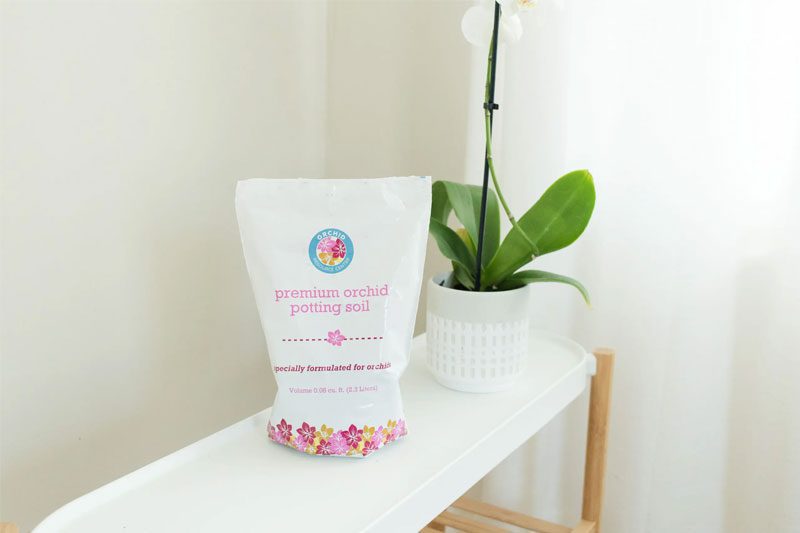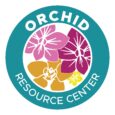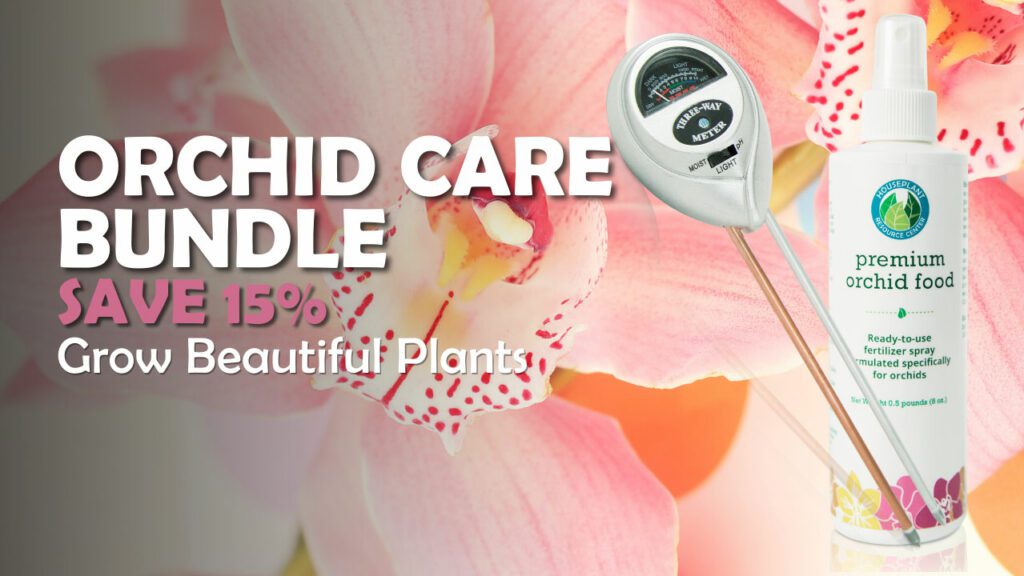The Best Soil for Orchids & How To Use It
Understanding what makes the best orchid soil and how to use it ensures you can give your plants the perfect growing conditions they need to thrive. Whether you are a novice or an experienced orchid grower, my tips on selecting and using the right orchid soil will help your plants reach their full potential.

Essential Qualities of the Best Soil for Orchids
Ventilation
Orchids need to breathe, and their soil needs to allow for optimal air circulation. A good orchid soil will have a mix of ingredients that enhance air circulation around the root system to ensure sufficient oxygen supply, nutrient absorption, and prevention of root rot.
Moisture Retention
Orchids require adequate moisture levels to sustain their growth, but not too much that can lead
to fungal infections. The ideal orchid soil will have the right balance of water-retaining ingredients that won’t allow for waterlogging but will hold enough moisture to keep the roots hydrated.
Drainage
Good drainage is crucial for orchids as they are susceptible to root rot if their soil is not well-draining. The best orchid mix should have a combination of coarse materials that allow water to pass through quickly, preventing the soil from becoming waterlogged. This type of soil structure also helps prevent the buildup of mineral salts that can damage roots.
Optimal pH Levels
Orchids prefer a slightly acidic growing environment with a pH of 5.5 to 6.0. A good orchid soil will have natural ingredients that help maintain this pH range and provide the necessary nutrients for healthy plant growth.
What Is The Best Soil For Orchids?
The best orchid potting soil isn’t actually soil but a mix of organic, well-draining ingredients that provide the perfect balance of air, moisture, and nutrient uptake. While most try to make their own soil from ingredients like charcoal, coco coir, and different moss types, the best orchid mix consists of a pre-made mix that is organic, non-toxic, and suitable for all varieties.
Hearty Bark Nuggets
To maintain the open structure and high airflow these beautiful houseplants need, the best orchid soil uses hearty bark nuggets that resist decomposition. These chunks of bark provide stability and foster air circulation around the roots, essential for orchids to thrive. Bark nuggets also retain moisture without becoming waterlogged, preventing root rot and fungal growth often caused by overly wet soil.
High-Quality Peat Moss
Premium peat moss is a key ingredient in the best orchid mix. It is lightweight and holds moisture while still allowing for proper airflow. Peat moss also contains small amounts of nutrients that are slowly released over time, providing essential nourishment for your orchids to grow and bloom.
Volcanic Pumice
The porous structure of volcanic pumice creates air pockets that promote root health and growth in the best orchid soil mixes. It is lightweight, resists compaction, and provides excellent drainage to prevent waterlogging.
Recycled Biomass
Many of the best orchid mixes now use recycled biomass, such as coconut and rice hulls, to provide additional aeration and moisture retention. These sustainably sourced materials have natural anti-fungal properties, keeping your orchids safe from harmful pathogens.
Orchid Soil vs. Indoor Plant Soil
In nature, orchids attach themselves to trees, rocks, and other surfaces, with their roots exposed to air and moisture. Therefore, traditional indoor plant soil is unsuitable for orchids as it retains too much water and does not allow proper air circulation. Furthermore, dense indoor potting soil can cause root suffocation and lead to unhealthy plant growth.
Orchid soil specifically designed for all species provides the perfect balance of air, moisture, and nutrients for these delicate plants to thrive. It is essential to use specialized orchid soil rather than regular potting soil when repotting or growing orchids in containers indoors.
While it is possible to make your own orchid soil, the truth is that DIY mixes may not have the perfect balance of ingredients, can be costly to make (up to 50% more expensive than premixed options), and lack the non-toxic, organic materials that ensure your orchids’ long-term health.
How To Use The Best Orchid Soil
With your premixed bag of the best orchid soil, repotting and caring for your orchids becomes a breeze. Follow these steps to give your plants the perfect growing conditions:
1. Choose the right pot size: Make sure there is enough room for roots to grow and proper drainage holes.
2. Remove old potting mix: Gently remove old potting mix from the roots and trim any dead or damaged parts with sharp pruning shears.
3. Add orchid soil mix: Fill the pot about halfway with your orchid soil mix, making sure to spread out the roots evenly.
4. Gently press the soil around the roots: Use gentle pressure to ensure good root contact with the soil and remove any air pockets.
5. Water thoroughly: Pour your watering can over the soil until water runs out of the drainage holes, ensuring thorough moisture for the roots.
6. Place in a suitable environment: Every orchid has unique growing requirements, so make sure to place your repotted plant in the right spot with adequate light and temperature levels.
Once everything is completed, maintain a regular watering cycle specific to your plant’s needs. You should also include orchid plant food into your routine to provide essential nutrients that may be lacking in the soil.
It is also a good idea to monitor water retention with a moisture meter. These devices are essential to ensure that your orchid soil is not too dry or too wet, giving first-time growers a better understanding of their plants’ watering needs.
Only Use The Best Orchid Soil For A Happy, Healthy Plant
Orchid health is directly related to the quality of their soil, making it crucial to choose only the best for your plant. By using an organic, non-toxic, specialized orchid soil mix provides the ideal environment for healthy root development, robust growth, and stunning blooms.
Want access to more expert advice and exclusive deals on the best orchid products? Sign up for our newsletter and never miss a chance to give your orchid the love and care it deserves. Happy growing!



